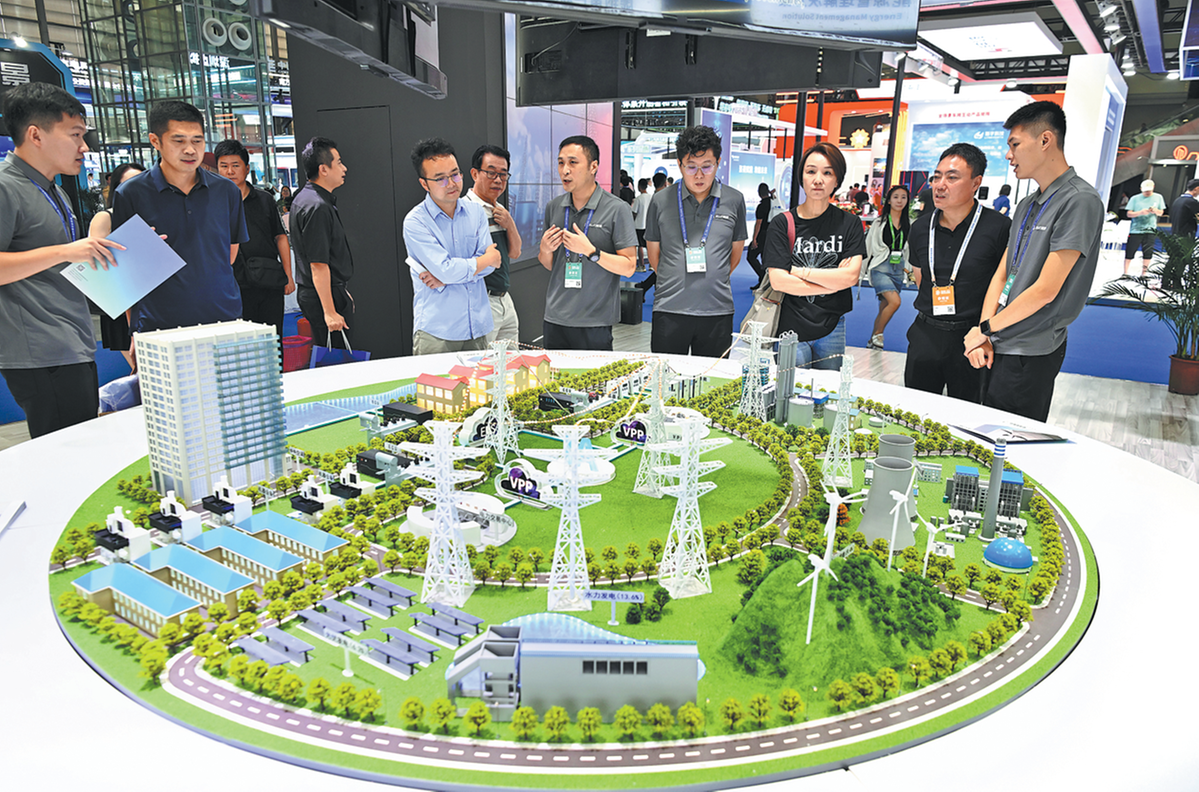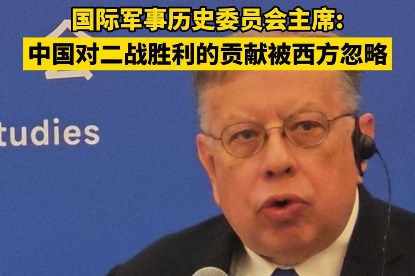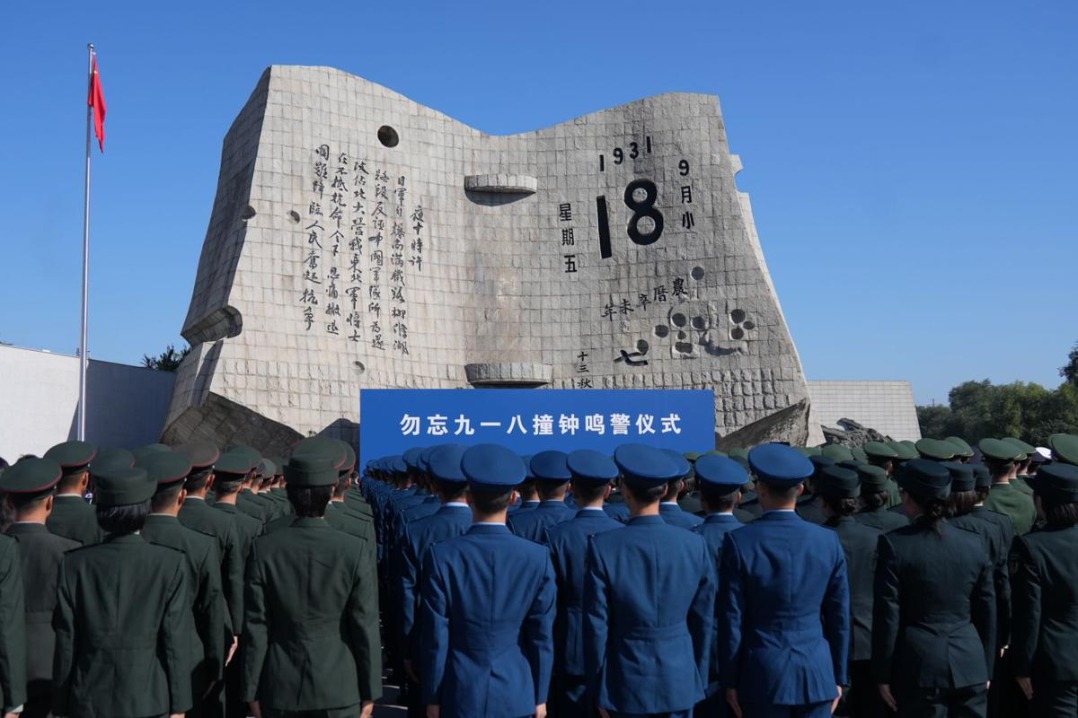Energy storage set for robust expansion
Rising number of installations over next three years to further fuel growth of key sector


China's energy storage sector has experienced rapid growth over the past two years and is expected to maintain strong momentum going forward, as the country continues to expand its renewable energy capacity, said industry experts.
While energy storage in China has surged ahead in the past few years, the significant new renewable energy capacity expected to come online across the country in the next three years will only further fuel the growth, said a new report by the China Electric Power Planning and Engineering Institute.
The report forecasts a high level of new renewable energy installations across the country over the next three years, with a surge in solar and wind power driving demand for distributed energy storage solutions and virtual power plants, as well as creating opportunities for new market players.
The integration of large-scale renewable energy requires flexible and reliable energy storage solutions, and a significant increase in demand for new types of energy storage technologies is expected to support the grid and ensure stability, it said.
The 2025 China Energy Development Report, released recently by the institute in Beijing, highlights the promising outlook for emerging energy storage technologies such as sodium-ion batteries and compressed air energy storage.
Compressed air energy storage is a method of storing energy by compressing air into a large underground reservoir, such as a cave or salt mine, using surplus electricity. When power is needed, the compressed air is released to drive a turbine and generate electricity, providing a way to balance energy supply and demand.
These technologies are seen as potential alternatives to lithium-ion batteries, offering advantages in terms of cost, resource availability and safety, and play a significant role especially amid the extraordinary pace and magnitude of China's renewable energy growth over the past five years, it said.
Zhu Yicong, vice-president of renewables and power research at Rystad Energy, said China — a country already possesses the world's largest renewable energy capacity — has been aggressively pursuing a greener economy.
Solar power is at the forefront of this transformation, poised to surpass existing records and solidify China's position as a leader in renewable energy. This projection underscores China's determination to lead the global transition to a cleaner energy future, she said.
During the 14th Five-Year Plan (2021-25) period, the proportion of renewable energy within China's total installed power generation capacity surged from 40 percent to approximately 60 percent, with wind and solar power annual installations demonstrating a trajectory of "leapfrog development", said the National Energy Administration.
This rapid expansion of renewable energy capacity directly translates into a growing need for energy storage systems, at home and abroad, to balance supply and demand, manage grid fluctuations, and ultimately, facilitate the seamless integration of renewables into existing power infrastructure, said industry experts.
According to the China Electric Power Planning and Engineering Institute, the growth of distributed energy storage is particularly noteworthy, as it allows consumers and businesses to store excess renewable energy generated on-site and use it when needed, further reducing reliance on the grid, and improve energy security.
Fueled by ambitious renewable energy targets and a growing recognition of the need for grid stability, Chinese companies have significantly ramped up their efforts in energy storage technologies in recent years.
This surge in activity spans a wide range of solutions, from large-scale battery storage systems to innovative approaches like compressed air energy storage and pumped hydro, reflecting a commitment to diversifying and strengthening the nation's energy infrastructure.
The world's first intelligent grid-forming photovoltaic and energy storage power station, tailored for ultrahigh altitudes, low temperatures and weak-grid scenarios, was connected to the grid in Ngari prefecture, Southwest China's Xizang autonomous region, in July, according to its operator Huawei.
The energy storage system is situated on the edge of the region's power grid, with a high proportion of new energy installations but a weak grid — connected to the main grid 500 kilometers away via a single 110-kilovolt line.
The project faced operational challenges due to low air pressure and oxygen levels, hindering equipment cooling and overall performance. The engineering breakthrough has further enhanced the stability of the local grid by generating their own voltage and frequency signals, contributing to a more robust and reliable energy infrastructure.
The China Energy Storage Alliance said in the first half of 2025, newly commissioned novel energy storage projects in China reached 23.03 gigawatts, representing a year-on-year increase of 68 percent in power capacity.
Notably, May alone saw a record-breaking 10.25 GW of new installations, a staggering 462 percent increase compared to the same month last year.
Fueled by growing global demand, Chinese energy storage companies are not only expanding their domestic presence, but are also actively pursuing opportunities in overseas markets, leveraging their technological advancements and competitive pricing to secure significant projects and partnerships worldwide.
Data released by the China Industrial Association of Power Sources reveal that global shipments of energy storage battery cells reached 226 GWh in the first half, a 97 percent year-on-year increase.
Chinese manufacturers dominate the sector, with the top nine companies in terms of shipments all being based in the country. Domestic firms accounted for over 90 percent of global energy storage lithium battery shipments, with overseas orders repeatedly breaking records, it said.
Chinese companies secured 199 new overseas energy storage orders and partnerships in the first half, totaling over 160 GWh, a 220.28 percent year-on-year increase, said CIAPS.
The Middle East emerged as the fastest-growing market, accounting for 37.55 GWh of orders, or 23.44 percent of the total. Australia followed closely with 32.31 GWh (20.17 percent), while Europe accounted for 22.81 GWh (14.24 percent) and Japan 15.06 GWh (9.4 percent).
The Middle East not only experienced the fastest growth, but also contributed the largest volume of new orders globally. Australia and some emerging markets in East Asia also saw a surge in large-scale orders, it said.
The global energy storage market has remained active in the third quarter, with Chinese companies announcing a string of significant order wins.
In late July, new energy power equipment maker Sungrow Power Supply secured a 2.4 GWh energy storage order in Europe, marking its entry into the Bulgarian market. On Aug 17, Hithium Energy Storage Technology and Saudi Electricity Company signed an agreement for the supply and maintenance of equipment for a 4 GWh energy storage project.
Power shortages across emerging markets in the Middle East, Southeast Asia, South Africa, India and Latin America are creating significant opportunities for Chinese energy storage companies, according to a research note from Guosen Securities.
The report highlights that supportive government policies in these regions are expected to drive substantial growth in energy storage installations, making emerging markets a crucial export destination for Chinese firms in the sector.
The energy storage sector has been transitioning from a policy-driven to a market-driven model, said Lin Boqiang, head of the China Institute for Studies in Energy Policy at Xiamen University.
This shift implies a greater reliance on market demand and pricing mechanisms, which is expected to fuel a sustained period of growth in energy storage capacity, he said.
"The inherent uncertainty surrounding future revenue from wind and solar power generation is further incentivizing these entities to invest in more energy storage equipment to mitigate risk and ensure grid stability."
In addition to energy storage, virtual power plants, which aggregate distributed energy resources such as solar panels, batteries and electric vehicles, are also gaining traction in China, providing grid services such as frequency regulation and peak shaving.
Wang Hongzhi, head of the National Energy Administration, said emerging models and business formats, including virtual power plants, are developing rapidly and becoming an important source of new productive forces.
Zhu Gongshan, chairman of GCL Group, China's largest private power firm, said energy storage, alongside other auxiliary services like vehicle-to-grid systems and smart microgrids, are paramount for ensuring grid stability.
These technologies are essential for rapidly adjusting power output to meet fluctuating demand and providing reliable backup power, creating a more resilient and responsive energy infrastructure, Zhu said.
Fueled by the growth of renewable energy technologies, energy storage has witnessed rapid investment during the past few years.
Investment in key projects, including new energy storage, charging and battery swapping infrastructure, hydrogen energy, and integrated source-grid-load-storage systems, approached 200 billion yuan ($28.08 billion) last year, said Wan Jinsong, deputy head of the National Energy Administration.
China's private enterprises are deeply involved in national science and technology projects in the energy sector, accounting for more than 85 percent of the power facility construction sector, with an average annual growth rate of over 15 percent, Wan said.
The country has set ambitious targets for renewable energy deployment and is investing heavily in energy storage technologies to support this transition. The continued growth of the energy storage sector is expected to play a crucial role in enabling China to achieve its climate goals, said the 2025 China Energy Development Report.
Today's Top News
- Defense leaders reaffirm security cooperation at Beijing Xiangshan Forum
- Vigilance and coordination needed to address impact of Fed's interest rate cut
- China will never reach agreement at expense of principles, companies: commerce ministry
- China's role in World Anti-Fascist War overlooked
- China leads the world in the number of people engaged in R&D: official
- China's defense chief reaffirms PLA's resolve to counter any interference?in Taiwan question






























